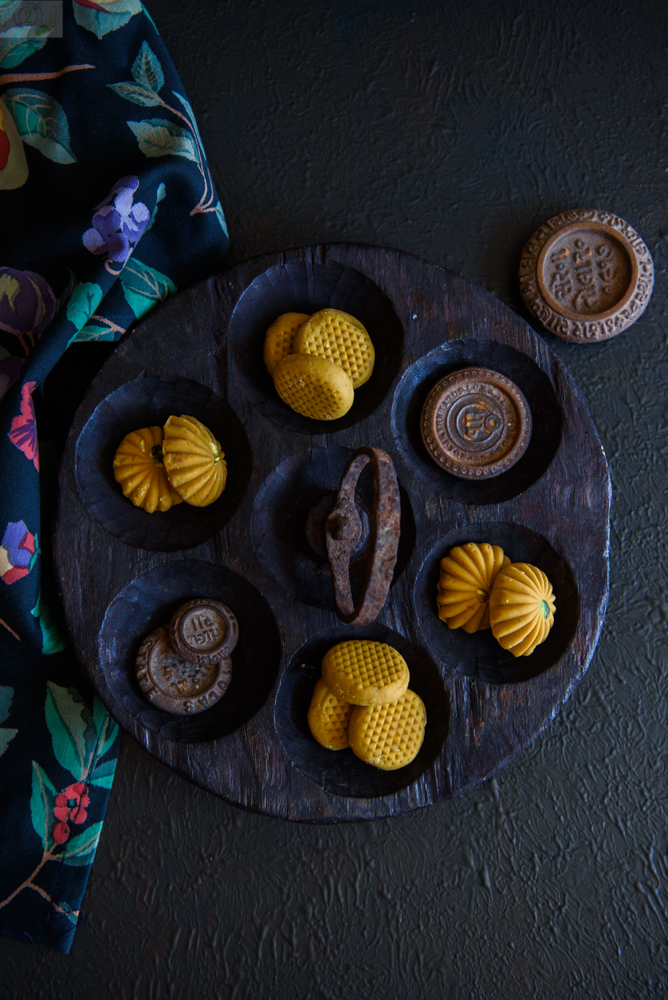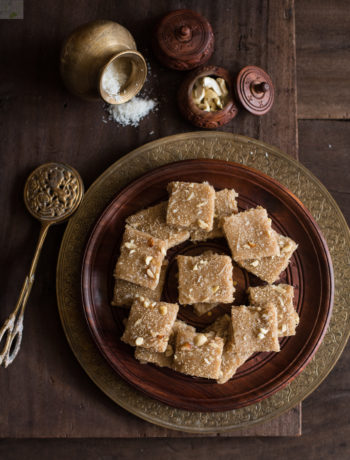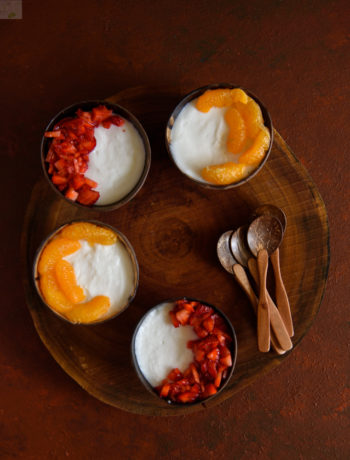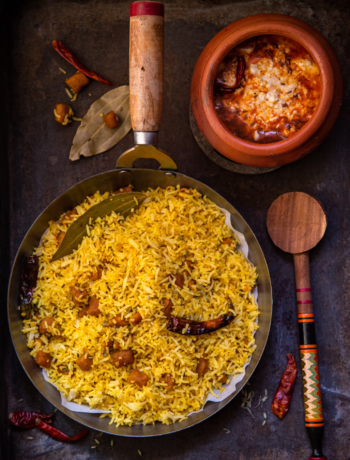Penda or Pera is the simplest and humblest avatar of a mithai . Believed to have originated from Mathura in Uttar Pradesh, Peda has never lost its charm and if by chance you have happened to taste the Deshi Mawa Peda of Saurashtra no other Peda will ever impress you. Trust me on that. During the bygone days, family and community gatherings or wedding festivities had one simple menu for snacks which was Gathiya-Peda, a combination fo savory and sweet. Both designed to last for long in the containers/pipra (small barrels). I myself have grown up eating humongous numbers of the Deshi Mawa Peda. The Peda we devoured travelled to Ahmedabad from Khambhda, a sleepy village in a remote corner of Ahmedabad district where our family had their ancestral land. Every time we saw Amarsinhdada (our caretaker) arrive the first thing was to ask for our share of Peda and he never failed to produce some from his theli (cloth bag). Deep beige in color, the peda came with their own stamp on it. Ours had ‘Khambhda’ stamped on it similarly, each regional peda came with a stamp of its origin. Apparently, the Peda from Khambhda were cheaper because they were made from the mawa of milk produced by small cattle i.e. the goats and sheep. I am told that the mawa made from this milk was cheaper than that made of buffalo and cow milk!! My Bhabhi remembers being assigned the task of stamping huge batches of such Peda as a kid, during the community feasts her parents hosted. The stamp that she used was a small weight/baat.
Made with only Mawa and sugar, the Deshi Mawa na Peda are a class apart both in taste and texture. It is not just the purity of ingredients but the entire process, effort that goes into cooking it that makes it the best. Mawa, the hero ingredient of this preparation is picked with great care also it has to be from Saurashtra. The Mawa originating from Saurashtra is known for its purity because the quality of milk here is too good. The process of making the Peda requires roasting the mawa in sugar syrup until it reaches the required texture. It is further mixed by hand/ghootvu until it cools down before it is shaped and stamped. The Peda mixture is so soft and pliable resulting in smooth finish of the Peda. Once made these Peda stay well for 15 days minimum. The dry and arid region of Saurashtra required such long lasting sweets because other milk based sweets perished quickly. These peda also made ideal travel companions because they were made to last long. Outside Saurashtra, very few mithai houses make them mainly because they do not get that quality of Mawa. I have continued to enjoy them even today because we have Saurashtra Farsan house in our vicinity. This 65 years old farsan house makes the best quality Peda from the mawa they source from Dhrangadhra in Surendranagar. The Pedas are made daily but only when the mawa arrives from Dhragadhra. Interestingly, mawa is traded as a fresh produce and its wholesale price keeps fluctuating on daily basis. So once the market opens up, the quality of mawa arriving to the market is gauged and the price is decided based on the principles of demand and supply. The demand for pedas peaks up during Navratri and Shravan month when they are widely consumed as Prasad and fasting food.
I am glad in these times of international desserts and fancy mithai, the humble old Deshi Mawa Peda have still managed to hold its charm yes, they aren’t made as widely but for those who value the authentic and original these pedas will continue to be the epitome of Peda.
Until you manage to get your hands on Deshi Mawa Peda, enjoy this picture or regular and saffron flavored pedas from Saurashtra Farsan House in Maninagar, Ahmedabad. The baat/weights are as vintage as the origins of this Pedas. 😍






No Comments